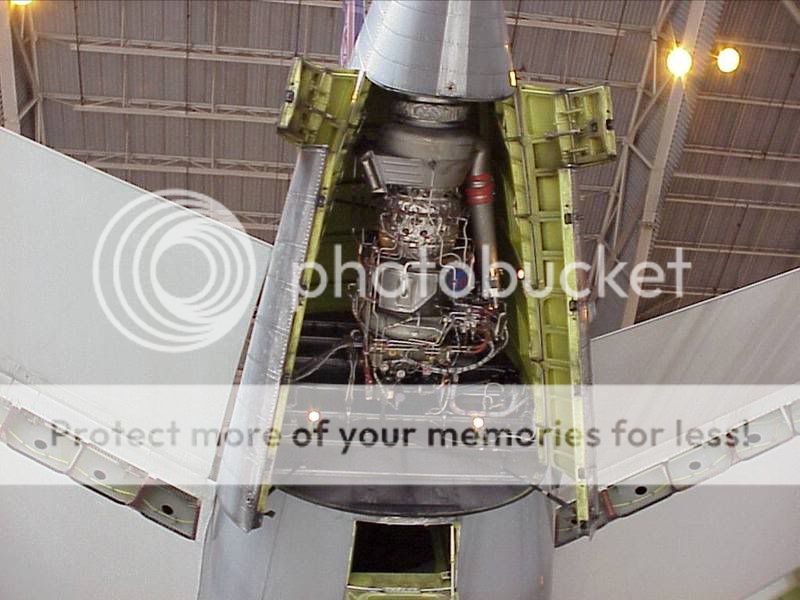TangoWhiskey
Touchdown! Greaser!
This is an update to the original thread on the Heathrow 777 that landed short.
At about 700 ft AGL, the auto throttle commanded engine acceleration. One engine started to rollback during and the other engine started to accelerate then 8-10 seconds later began to roll back. Once the flight crew noticed, they pushed the throttles up and the engines' EECs responded but the engines did not. It appears that no fuel was getting to the engines.
The investigation continues to look broadly for a cause of the dual engine rollbacks. Fuel exhaustion is the only item that has been positively ruled out. Aspects that the FAA believes the investigation is concentrating on are:
• Ice in the fuel somehow limiting the fuel flow to the engines. A maintenance message indicating excessive water in the center tank was set during taxi on the two previous flight legs, although it cleared itself both times. The airplane was being operated in a high humidity, cold environment, conducive to ice formation.
• Small-sized contamination building up in the engine fuel systems somehow limited the fuel flow to engine. All the fuel samples have tested for contamination of larger particles (sizes outside the fuel specification). Testing has been started looking for small particles (greater than 5 microns).
• Engine hardware failures sending inaccurate data to the engine electronic control (EEC) causing the EEC to demand insufficient fuel. A preliminary review of the EEC data from the right engine shows erratic combustor inlet pressure (P30). A leaking P30 sense line could cause this, or the EEC receiving a higher than actual fuel flow parameter.
• Software coding problem in the EEC causing the EEC to demand insufficient fuel. British Airways installed a new engine EEC software revision in December 2007. The software was approved in May 2006. There were several changes to the software as part of the revision. Two items seem remotely related to the accident: improvements to low power stall recovery logic and fan keep out zones for ground maintenance. The first two items would be related to a part 25 compliance issue, while the last two items would be related to a part 33 compliance issue.
As stated yesterday in this briefing paper, the electrical system anomalies noted earlier have been resolved, as describe below, and the conclusion now is that the electrical buses were powered until impact and performing as expected.
• The auxiliary power unit (APU) began its auto start sequence, even though the buses were still powered. In the days following the event, the flight crew has added additional details to their report. The crew now believes they turned the APU on prior to impact. There was sufficient time before the impact for the APU inlet door to open, but not for the APU fuel pump to turn on or the APU engine to start spooling up.
• The quick access recorder (QAR) saved data and shut down approximately 45 seconds prior to impact. The QAR saves data in batches. It is believed the QAR was working properly and was in the process of saving data when impact occurred, accounting for the “lost” 45 seconds of data.
• The fuel crossfeed valves were closed in flight according to the flight crew, but the switches were found in the open position and only one valve was open. In the days following the event, the flight crew has added additional details to their report. The crew now believes they opened the valves just prior to impact and the airplane lost power before both valves moved to the open position.
• The ram air turbine (RAT) was found deployed, even though the buses were still powered. It did not deploy until after the airplane came to a stop, as determined by the pristine condition of the turbine blades. The RAT either deployed due to electrical power loss during impact with a failed air/ground signal or the impact unlatched the RAT door.
Fuel system: Leads regarding water in the fuel and fuel contamination are continuing to be investigated. Fuel testing looking for small-sized contaminants (5 microns) is beginning. The tanks are still being drained and the team hopes to start evaluating the fuel system hardware tomorrow.
Engines: Component testing and teardown of the engine-driven fuel pumps and the fuel metering units is planned for later this week. The data from the electronic engine controls is still being analyzed. Rolls-Royce is planning an engine test, unscheduled as yet, to try and duplicate the rollbacks.
Crashworthiness: Cabin crew and passenger questionnaires indicate that the evacuation bell was faint, but the evacuation light was seen and the captain’s message to evacuate over the passenger address system was heard. Preliminary data indicates that the descent rate at impact was roughly 30 ft/sec. Dynamic seat requirements that became effective at the introduction of the Model 777 series airplanes require seats protect occupants for hard landing impact up to 35 ft/sec. The passenger with the broken leg was sitting next to the point where the right main landing gear punctured the fuselage and pushed into the cabin (pictured below).


Crashworthiness: There was only one serious injury, a compound fracture to the leg. The airplane landed on the main gear, bounced, came back down on the gear, then the gear failed, and the engines supported weight of the airplane. The descent rate at landing was 1500-1800 feet per minute. One of the main landing gear swung around and pushed slightly into the cabin. The other punctured the center fuel tank (empty) leaving a 1-by-2-foot hole. The report of a fuel leak is unconfirmed. All the slides deployed and the doors worked. Some passengers had to shuffle down the slides due to the slight angle. The flight deck door opened on its own during the landing. Some oxygen masks dropped.
At about 700 ft AGL, the auto throttle commanded engine acceleration. One engine started to rollback during and the other engine started to accelerate then 8-10 seconds later began to roll back. Once the flight crew noticed, they pushed the throttles up and the engines' EECs responded but the engines did not. It appears that no fuel was getting to the engines.
The investigation continues to look broadly for a cause of the dual engine rollbacks. Fuel exhaustion is the only item that has been positively ruled out. Aspects that the FAA believes the investigation is concentrating on are:
• Ice in the fuel somehow limiting the fuel flow to the engines. A maintenance message indicating excessive water in the center tank was set during taxi on the two previous flight legs, although it cleared itself both times. The airplane was being operated in a high humidity, cold environment, conducive to ice formation.
• Small-sized contamination building up in the engine fuel systems somehow limited the fuel flow to engine. All the fuel samples have tested for contamination of larger particles (sizes outside the fuel specification). Testing has been started looking for small particles (greater than 5 microns).
• Engine hardware failures sending inaccurate data to the engine electronic control (EEC) causing the EEC to demand insufficient fuel. A preliminary review of the EEC data from the right engine shows erratic combustor inlet pressure (P30). A leaking P30 sense line could cause this, or the EEC receiving a higher than actual fuel flow parameter.
• Software coding problem in the EEC causing the EEC to demand insufficient fuel. British Airways installed a new engine EEC software revision in December 2007. The software was approved in May 2006. There were several changes to the software as part of the revision. Two items seem remotely related to the accident: improvements to low power stall recovery logic and fan keep out zones for ground maintenance. The first two items would be related to a part 25 compliance issue, while the last two items would be related to a part 33 compliance issue.
As stated yesterday in this briefing paper, the electrical system anomalies noted earlier have been resolved, as describe below, and the conclusion now is that the electrical buses were powered until impact and performing as expected.
• The auxiliary power unit (APU) began its auto start sequence, even though the buses were still powered. In the days following the event, the flight crew has added additional details to their report. The crew now believes they turned the APU on prior to impact. There was sufficient time before the impact for the APU inlet door to open, but not for the APU fuel pump to turn on or the APU engine to start spooling up.
• The quick access recorder (QAR) saved data and shut down approximately 45 seconds prior to impact. The QAR saves data in batches. It is believed the QAR was working properly and was in the process of saving data when impact occurred, accounting for the “lost” 45 seconds of data.
• The fuel crossfeed valves were closed in flight according to the flight crew, but the switches were found in the open position and only one valve was open. In the days following the event, the flight crew has added additional details to their report. The crew now believes they opened the valves just prior to impact and the airplane lost power before both valves moved to the open position.
• The ram air turbine (RAT) was found deployed, even though the buses were still powered. It did not deploy until after the airplane came to a stop, as determined by the pristine condition of the turbine blades. The RAT either deployed due to electrical power loss during impact with a failed air/ground signal or the impact unlatched the RAT door.
Fuel system: Leads regarding water in the fuel and fuel contamination are continuing to be investigated. Fuel testing looking for small-sized contaminants (5 microns) is beginning. The tanks are still being drained and the team hopes to start evaluating the fuel system hardware tomorrow.
Engines: Component testing and teardown of the engine-driven fuel pumps and the fuel metering units is planned for later this week. The data from the electronic engine controls is still being analyzed. Rolls-Royce is planning an engine test, unscheduled as yet, to try and duplicate the rollbacks.
Crashworthiness: Cabin crew and passenger questionnaires indicate that the evacuation bell was faint, but the evacuation light was seen and the captain’s message to evacuate over the passenger address system was heard. Preliminary data indicates that the descent rate at impact was roughly 30 ft/sec. Dynamic seat requirements that became effective at the introduction of the Model 777 series airplanes require seats protect occupants for hard landing impact up to 35 ft/sec. The passenger with the broken leg was sitting next to the point where the right main landing gear punctured the fuselage and pushed into the cabin (pictured below).


Crashworthiness: There was only one serious injury, a compound fracture to the leg. The airplane landed on the main gear, bounced, came back down on the gear, then the gear failed, and the engines supported weight of the airplane. The descent rate at landing was 1500-1800 feet per minute. One of the main landing gear swung around and pushed slightly into the cabin. The other punctured the center fuel tank (empty) leaving a 1-by-2-foot hole. The report of a fuel leak is unconfirmed. All the slides deployed and the doors worked. Some passengers had to shuffle down the slides due to the slight angle. The flight deck door opened on its own during the landing. Some oxygen masks dropped.
Last edited:











